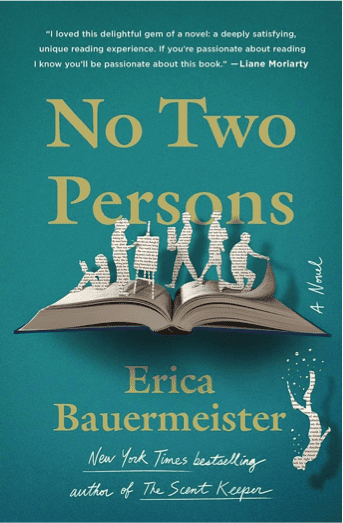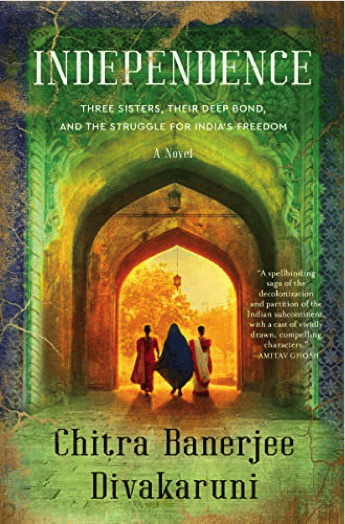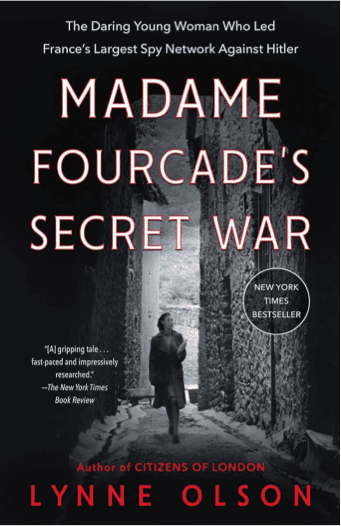No Two Persons
by Erica Bauermeister
“No two persons ever read the same book, or saw the same picture.”
–The Writings of Madame Swetchine, 1860
I don’t want to provide spoilers for this fascinating novel, so will be brief. This is the story of how Alice’s debut novel, “Theo,” affects nine readers, all of whom are from various walks of life: an artist, a caretaker, a deep sea diver, etc. Just as each reader discovers “Theo” completely through happenstance, each reader’s life is transformed in a myriad of ways. And curiously, their lives are associated in various ways. Enriching and imaginative, this is a novel you cannot miss!
Independence
by Chitra Divakaruni
“Can you cut up a country as though it were a cake?”
The novel’s title, Independence, refers to both the Indian struggle for independence from Great Britain, and women’s struggle against being considered second-class citizens in India’s male-dominated society. In 1947, the Indian Partition created a new country, Pakistan, expressly for Muslims, while India was reserved for Hindus. Amidst turmoil and political unrest, this compelling story chronicles three devoted sisters searching for their own independence. Jamini hopes to be married and raise a family. Priya plans to become a doctor, despite it being almost incomprehensible for a woman to become a doctor at the time. Deepa and a Muslim man, Raza, fall in love, horrifying their families since it was considered anathema for a Muslim and a Hindu to marry. Their father, Nabakumar Gangulya, is an esteemed physician in Bengal, the small village where they live. He and his wife, Bina, provide an enlightened and loving home for the family.
An immersing historical portrayal, Independence is filled with the drama of the South Asian diaspora and related cultural and political strife. The author masterfully showcases women’s empowerment and characterizes how each woman develops her own individual strength, while experiencing the challenges and upheaval of the time. After the Partition, the family circumstances are forever changed, but the sisters retain a unique and devoted bond. This poignant novel would provide a worthy discussion for book clubs.
A professor of creative writing, Divakaruni’s detailed biography and list of awards is extensive. If interested, you may view it on her website. I reviewed her magical novel, Mistress of Spices, for the PCL newsletter in the past.
Dear readers, this month I’ve reviewed two outstanding historical biographies, both written by the extraordinarily-talented Lynn Olson. She’s a meticulous researcher, unlike some authors of historical fiction. I couldn’t decide which to review, so opted to review both. I am especially fond of the World War II genre, and I think Madame Fourcade is one of the best books I’ve read in the past 50+ years about a woman spy during that era. I hope you enjoy them.
Empress of the Nile: The Daredevil Archaeologist Who Saved Egypt’s Ancient Temples from Destruction
by Lynne Olson
“The oldest nation-state in history, Egypt had been welded into a single country more than 3,200 years before the birth of Christ … The Egyptians’ invention of the concept of a unified nation, whose population shared a common identity, was remarkable not only for its impact on the world but also for its longevity.”
Determined and astute, Parisian-born Christiane Desroches-Noblecourt became the world’s leading expert on ancient Egypt. In her forties, she already was a highly regarded archaeologist when she became the leader of the legendary project to rescue the magnificent temple of Abu Simbel from being submerged by the construction of the Aswan Dam, in the1960’s. This was her crowning achievement and a momentous feat. It involved coordinating an unprecedented effort by numerous nations, an extraordinary amount of funding, and massive efforts to promote the project by influential people such as Jackie Kennedy Onassis.
The narrative reads like a novel and recounts her extraordinary achievements and contributions to the world regarding Egyptian archaeology, and rescuing its historical monuments from destruction. I felt I was reading about a female Indiana Jones!
According to LiveScience.com, it was built in 1244 B.C. Abu Simbel contains two temples, carved into a mountainside. The larger of the two temples contains four colossal statues of a seated pharaoh Ramesses II (1303-1213 B.C.) at its entrance, each about 69 feet (21 meters) tall. The entranceway to the temple was built in such a way that on two days of the year, October 22 and February 22, sunlight shines into the inner sanctuary and lights up three statues seated on a bench, including one of the pharaoh. The temples were dismantled and relocated in 1968 on the desert plateau 64 meters (about 200 feet) above and 180 meters (600 feet) west of their original site. Moving the temples was a massive job, one that involved cutting it into pieces between 3 to 20 tons in weight and re-assembling them precisely as they were. It took almost five years, involved about 3,000 workers and cost (in the 1960s) about $42 million.
Ever the intrepid and intellectually curious adventurer, Desroches-Noblecourt also was a spy for the Allies during World War II. What is remarkable is the fact she accomplished so much despite the field of archaeology at the time being completely dominated by men. She could definitely handle herself in a man’s world. One anecdote in the book relates how during an interrogation by the Nazis while imprisoned, she berated them for their insufferable insolence. Another one describes how she asked Charles de Gaulle, then President of France, for funding for the Abu Simbel project. She was 5 feet tall, feisty, and desperate to save Abu Simbel. De Gaulle was an imposing 6 feet 5 inches. He gave her the money after she pointed out his desperate, but heroic behavior of defying the French Vichy government installed by the Nazis in 1940. Recipient of France’s Grand Cross of the Légion d’Honneur, France’s highest honor, Desroches-Noblecourt died at age 97 years in 2011.
An interesting portion of the book describes the significant role Jackie Kennedy played in securing funds from major donors and the U.S. towards the Abu Simbel project.
Madame Fourcade’s Secret War: The Daring Young Woman Who Led France’s Largest Spy Network Against Hitler
by Lynne Olson
Sophisticated, heroic and fearless, Fourcade was raised in Shanghai and Paris by her wealthy parents and planned to become a concert pianist. During World War II, she became the leader of the Alliance, the largest secret intelligence network in the French Resistance in occupied France. 3,000 agents were under her jurisdiction. Audacious and inventive, she was twice arrested, and escaped the police. Amazingly, she survived imprisonment at Ravensbrück, the women’s infamous, ghastly concentration camp in Germany, where over 50,000 women died. The Nazis tortured and executed hundreds of the Alliance’s agents. Sadly, one of the agents murdered was Fourcade’s lover and second-in-command.
Fourcade was determined to fight the Nazi regime despite being a mother of young children and was not only separated from her children but also was pregnant with a third child during the war.
In 1989, Fourcade died at age of 79. Notably, she was the first woman to be buried at Les Invalides, the illustrious site dedicated to military history and to honor France’s war heroes. Napoleon is also buried there.
Olson, as usual, with her painstaking research regarding the World War II era and Fourcade, deftly chronicles Fourcade’s life and exploits. The spellbinding narrative reads like an absolutely thrilling page-turner! Devotees of World War II history and espionage novels will especially appreciate this book. Interestingly, despite the multitude of claims from French citizens being Resistance fighters during that era, in actuality, only two percent of the population participated in in the Resistance.
Adult book reviews are by Susanne Dominguez.




